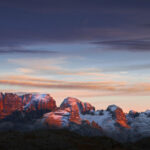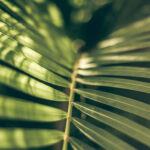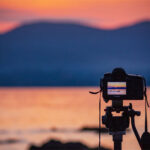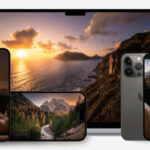It’s a great time to be a photographer. Better lenses, better cameras, and better accessories—what else could a photographer ask for? With so much choice, it’s actually pretty tough to decide what you want. If we just talk about lenses for a while there are literally hundreds of options. But instead of stocking up on exotic pieces of glass, taking the focused route with a single lens is a much better option. It’s practically guaranteed to improve your photography by leaps and bounds. Photographer Doug McKinlay from Adorama has a few tips to share:
The lens McKinlay chooses for this exercise is a 50mm lens, sometimes referred to as a “normal” lens. He uses the Canon 50mm f/1.4, but there are plenty of cheaper options available, including the Canon 50mm f/1.8, also known as the Nifty Fifty.
Why the Nifty-Fifty?
Though there are lots of other good lenses, the 50mm has some inherent advantages. For a start, the 50mm is a sharp all around package with a fixed focal length that matches the same angle of view as the human eye. In other words, the Nifty Fifty is a standard prime lens.

The 50mm prime gives roughly the same angle of view as the human eye.
McKinlay pairs the lens with a Canon EOS 5D Mark III. If you have an APS-C camera, like the Canon 7D or one of the Rebel series DSLRs (with a crop factor of 1.6x) a standard prime would be something like the 35mm.
Why is a Prime Lens Revered by Photographers?
With a fixed prime lens you’re limited in your ability to zoom, except when you zoom with your feet. A prime lens is an optically sharp lens sans the frills that make your photography too technical. So you have to concentrate on the quality of your composition rather than play around with the zoom rings and other stuff.
“We don’t want to just show off the versatility of a 50mm lens but we want to highlight all those things that you need to think about in order to get good pictures. We want to focus our minds and not rely on a big bag of tricks.”
The other big reason for the Nifty Fifty being such a popular lens is its wide maximum aperture. At f/1.8 it easily supersedes a kit lens by at least a stop or two in terms of ability to capture more light. It is indeed a great lens for natural light photography.

The 50mm is a great lens for natural light photography.
Street Photography Exercise with a Prime Lens
Try this exercise to get familiar with using a prime lens and improve your composition skills.
One of the more frequent applications of a 50mm lens is in street photography and reportage or documentary photography. There are some other lenses too like the 24mm and the 35mm which are good for these genres of photography. Any lens will do as long as it’s not over 50mm and is a prime. At more than 50mm you lose the standard angle of view. A standard prime will help you to get the composition right.
Challenge yourself to exclude anything you don’t want in your final frame. Use your feet to “zoom”, and don’t rely on cropping later to get the shot.
For this exercise, McKinlay sets his camera’s shooting mode to single shot. He explains,
“We want to concentrate on the images. This exercise is all about taking our time. What we want to capture is what Cartier-Bresson used to say the ‘Decisive Moment’.”

The 50mm is a great lens for capturing the ‘decisive moment’.
“Landscapes and cityscapes are all about point of view. In that regard a little research goes a long way. I always found that by returning at the places often at different times of day or year I get better pictures. Just because I know it better. Because we are using a 50mm research can be vital. We need to find points of view that will enhance images taken with this lens.”
Like This Article?
Don't Miss The Next One!
Join over 100,000 photographers of all experience levels who receive our free photography tips and articles to stay current:






There’s a few times I’ll go out with just a 50mm. I’m always a bit paranoid though that I’ll miss something great when I do so!